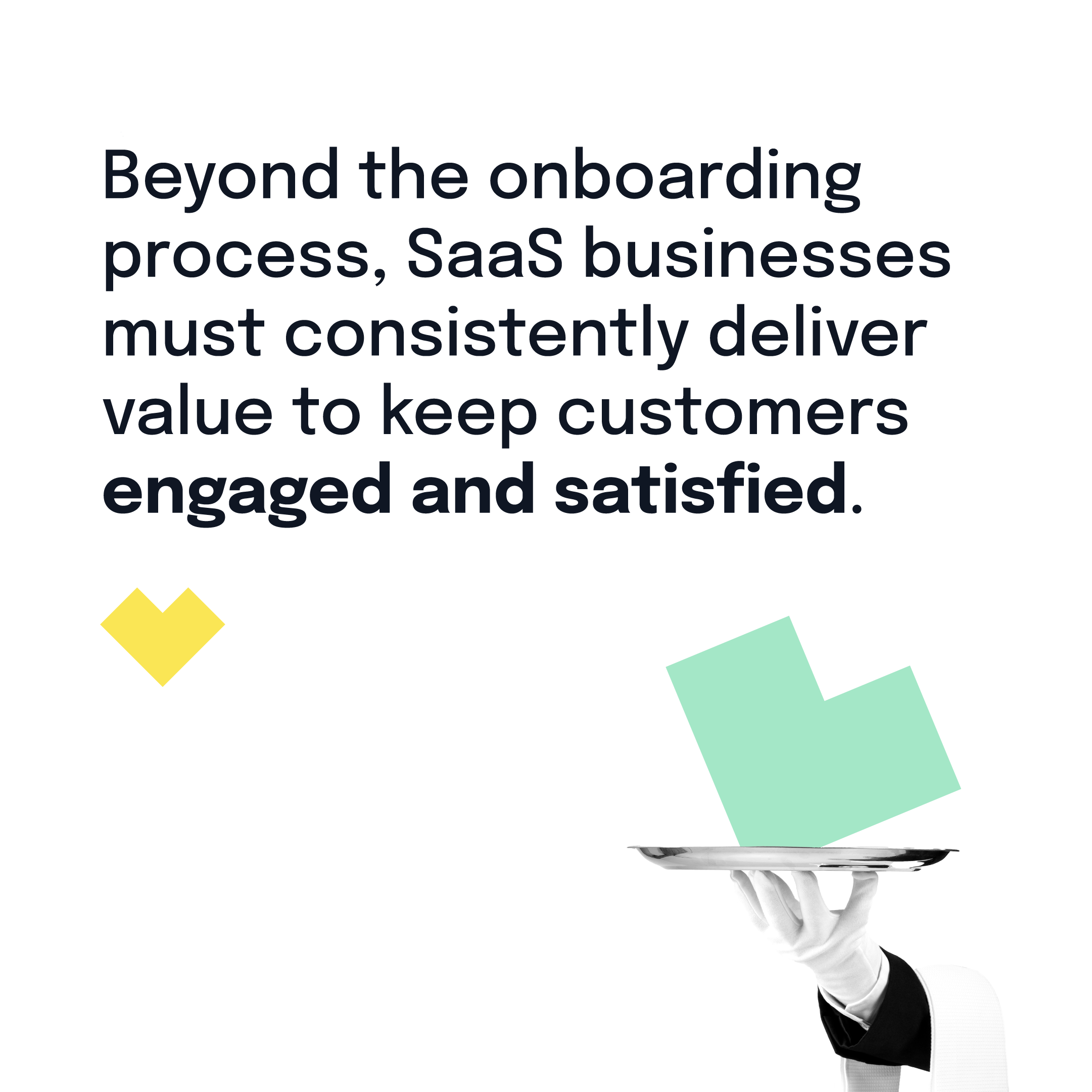In a world where competition is fierce, customer retention strategies are paramount for SaaS businesses. By focusing on ongoing customer experience, from onboarding to the entire lifecycle, businesses can build lasting relationships, drive growth, and become industry leaders.
In today’s rapidly evolving digital landscape, Customer Experience (CX) has emerged as a pivotal factor for the success of any business.
For B2B SaaS companies, where customer relationships often extend over the long term, delivering an exceptional CX becomes even more critical. In this article, we’ll delve into the significance of customer experience for SaaS businesses, with a special focus on enhancing the onboarding experience.
The Power Of Customer Experience In SaaS
Customer Experience isn’t just a buzzword; it’s a competitive advantage that directly impacts customer retention, loyalty, and advocacy. For SaaS businesses, CX goes beyond the initial sale – it’s about fostering a long-term relationship and ensuring that customers derive ongoing value from your product. Positive CX can lead to reduced churn rates, increased cross-selling and upselling opportunities, and a strong brand reputation.
Don’t Overlook Onboarding
One area that SaaS businesses frequently overlook when it comes to CX is the onboarding process. Onboarding is the user’s first interaction with your product, and it sets the tone for their entire journey.
A smooth onboarding experience not only reduces the likelihood of customers abandoning your product prematurely but also enhances their perception of your brand.
Enhancing Onboarding: 8 Concrete Strategies
- Personalized Welcome: Begin the onboarding process with a personalized welcome. Use the customer’s name and provide a brief overview of the benefits they’ll gain from using your product. This small touch creates a connection and sets a positive tone.
- Guided Tutorials: Instead of bombarding users with a myriad of features, offer guided tutorials that walk them through core functionalities step by step. Use interactive elements like tooltips, animations, and progress trackers to make the learning process engaging and effortless.
- Clear Value Proposition: Clearly communicate the unique value your SaaS product brings to the user’s business. Show how it addresses their pain points and solves specific challenges. Highlight real-world examples of successful implementation.
- Interactive Onboarding: Incorporate interactive elements such as quizzes or interactive demos that encourage users to actively engage with the product. This hands-on approach not only reinforces learning but also boosts user confidence.
- Progressive Profiling: Don’t overwhelm users with extensive forms during sign-up. Collect essential information initially and gradually request more details as they become more accustomed to the platform. This minimizes friction and makes the onboarding process less daunting.
- Proactive Support: Integrate live chat or AI-powered chatbots to provide instant assistance during onboarding. If a user seems stuck or confused, these tools can offer guidance in real-time, preventing frustration and ensuring a smoother experience.
- Segmented Onboarding Paths: Recognize that different users have different needs. Offer segmented onboarding paths based on the user’s role, industry, or objectives. This tailored approach ensures users receive relevant guidance, increasing the likelihood of rapid adoption.
- User Feedback Loop: During onboarding, actively seek user feedback. This not only shows that you value their opinions but also helps you identify pain points in the onboarding process that might need improvement.
The Power Of Customer Experience Beyond Onboarding
While onboarding sets the stage, customer experience is an ongoing journey that extends far beyond this initial interaction. Beyond the onboarding process, SaaS businesses must consistently deliver value to keep customers engaged and satisfied.
Statistics underscore the importance of focusing on customer experience. According to the “Zendesk Customer Experience Trends Report,” businesses that prioritize customer experience see a 1.7 times increase in customer retention compared to those that don’t. This highlights the direct correlation between delivering exceptional customer experiences and fostering long-term loyalty.
Top 5 Customer Retention Strategies for SaaS Businesses:
- Personalized Engagement: Tailor communications based on preferences and usage patterns, using personalized emails, in-app messages, and relevant content for an enhanced user experience.
- Proactive Support: Anticipate challenges and provide solutions before customers realize they need help, demonstrating your commitment to their success.
- Regular Check-ins: Maintain contact to gauge satisfaction and gather feedback, strengthening your customer relationships and gaining valuable insights.
- Customer Education: Empower customers with resources, webinars, and tutorials to maximize product use, fostering loyalty and advocacy.
- Incentivized Loyalty: Reward loyal customers with exclusive offers, discounts, or access to premium features, fostering engagement and a sense of belonging.



